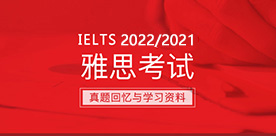2017.12.2雅思考试机经回忆
2017/12/4 14:07:34来源:新航道作者:新航道
摘要:上海新航道雅思培训机构小编为大家带来的是刚过去的2017.12.2的雅思考试回忆,还有答案和解析哦!
上海新航道雅思培训机构小编为大家带来的是刚过去的2017.12.2的雅思考试回忆,还有答案和解析哦!
Listening
|
Section 1 |
|
|
Version |
Topic |
|
V11139 |
Exhibition in Birmingham |
|
Questions 1-10 1. Event date: 11th March 2. See and test products. 3. No cameras allowed in the museum. 4. If you do not pay in advance, $165 is the price on that day. 5. Name of the road: Edgeworth 6. Address: Summer Street 7. Website: directions 8. Simplest way of booking: online 9. The best way people can go there: bus 10. An extra tour is included in the fees. |
|
|
Section 2 |
|
|
Version |
Topic |
|
V10123 |
新的音乐学校 |
|
Questions 11-20 11. The location of the new campus: opposite the library. 12. There are 14 classrooms. 13. A car park is near the swimming pool. 14. The available website: www.playwell.com 15. They teach all level of violins. (for those lower than level 3) 16. drum (above level 5) 17. piano (for level 3) 18. There is a concert being held in June and December. 19. CDs will be given as awards. 20. The performance will be given in a concert. |
|
|
Section 3 |
|
|
Version |
Topic |
|
V13111 |
缺勤主题学术讨论 |
|
Questions 21-25 21. What is Amy’s aim of the investigation? A. Whether it may be reduced. (她说到了她想看看,这个缺席的次数能不能减少) B. Why it is increasing C. How much does it cost
22. In order to get a good return, Amy? A. send a reminder (女学生说之前是挨个人发的,但是这次调查人数多,所有他听取了老师的意见,说到了use the email as a reminder.) B. deliver them to people one by one C. in a short period
23. Why did Amy divide members into four groups? A. She can get a manageable amount of information. (女学生讲到了每一个group都有manageable amount of information) B. it is convenient for her to analyze the data C. because she needs similar sized groups
24. What about most managers’ attitudes toward the current problem of workers’ absence? B. should give workers more severe punishment. (大部分经理认为处罚不够,也有一部分人认为员工的健康问题需要重视。但题目问的是most managers) C. companies should give employees aid in healthcare.
25. How to check another company additional information on? A. a journal for professionals (originally check on the internet to compare competitors (company) files;后来professional journals found more现有的资料很全,准确) B. company files C. a website
Questions 26-30 A. expand it B. move it C. reorganize it D. delete it E. rename it F. leave as it is G. reduce it 26. Introduction---F (男的说需要改变,但是我们需要把其他部分改完了再来改它,所以先留着) 27. Background---B (Cut down,放进另一个attachment更好) 28. Literature reviews---G (女的说这是男的建议写的部分男的说摘抄太多了,需要缩减一下) 29. Methodology---C 30. Results---D (因为文章太具体了,而且篇幅很大,不需要你结论) |
|
|
Section 4 |
|
|
Version |
Topic |
|
V09108 |
工业发展对服装纺织业的影响 |
|
Questions 31-34 Twentieth Century 31. The number of employees: 1.5 million people. 32. because of the invasion of outsides industry, the closure of manufacturing facilities in larger factories. 33. In 20th century, fashionable clothes are mainly for: women 34. In the future, they choose products of clothing: outdoors
Questions 35-36 35. What is the change for this industry? A. employ more than another line B. small group C. less labour (workers) needed (company hire a smaller number of people)
36. This shift provide the opportunities of A. require higher linguistic ability (有明确提到现在外贸发展很好,需要员工有很好的外语能力) B. need more designers C. need more engineers
Question 37-40 Matching A. design clothes B. products quantity C. price negotiations D. overseeing process control E. Handle complaints F. identify fabric trend G. What to display in the store 37. Technologist---F (她有说到make analysis only and not design anything by themselves,所以他的主要职责是确立面料,跟上潮流) 38. Operation manager---D (有讲到流程process,负责店里面买多少东西,配多少货) 39. Merchandiser---C (有讲到set sales retail, or price) 40. Visual Merchandiser---G (Visual attraction,安排橱窗展示哪些服装) |
|
Reading
|
Passage 1 |
|
|
Topic |
Wall paper |
|
Content Review 文章大意:按照时间顺序展开,详细描述了墙纸的各个发展阶段。
Questions & Answers 待回忆 |
|
|
Passage 2 |
|
|
Topic |
澳洲新能源开发 |
|
Content Review Renewable Energy An insight into the progress in renewable energy research A The race is on for the ultimate goal of renewable energy.
B At the moment the front-runner in renewable energy is wind technology.
C Electricity can be produced from coal at around 4 cents per kilowatt-hour, but only if the environmental costs are ignored.
D Australian Hydro has dozens of wind monitoring stations across Australia as part of its aim to become Australia’s pre-eminent renewable energy company.
E While wind may currently lead the way, some consider a number of technologies under development have more potential.
F One such development uses hot, dry rocks.
G No greenhouse gases are produced, but the system needs some additional features if it is to be environmentally friendly.
H Two other proposals for very different ways to harness sun and wind energy have surfaced recently.
I This year, Enviropower recognized that the quality of sunlight in the Mildura district will require a substantially larger collecting area than was previously thought.
J Another Australian company, Wavetech, is achieving success with ways of harvesting the energy in waves.
K The diversity of forms of greenhouse -friendly energy under development in Australia is remarkable.
Questions & Answers Questions 14-20 TFNG 14. Alternative energy is less expensive than traditional energy. F (答案在C段) 15. The system from Geoenergy needs to be adjusted to reduce its environmental impact. T (对应C段第一句) 16. Dr Prue Chopra studies the effect of radon gases on environment. NG (对应C段) 17. Hot rocks can provide enough energy for the whole country. T (对应C段) 18. The new Enviropower facility will keep tourists away. F 19. Wavetech was established when its founders were turned down by another company. T 20. According to AEA, Australia is leading the world’s renewable energy production. F (对应K段,but the reality is we are a long way behind)
Questions 21-26 Matching 21. The gas is trapped inside the system and can’t escape. B (答案在G段) 22. Water pushes air through a special devise. D (答案在J段) 23. The technology used copys that of the other countries. A (答案在B段) 24. The system includes more service other than power generation. C (答案在I段) 25. The water is pushed deep underground. B (答案在G段) 26. Estimates about a particular plan has been revised. C (答案在I段)
A. Australian Hydro B. Geoenergy C. EnviroPower D. Wavetech |
|
|
Passage 3 |
|
|
Topic |
短信参与电视节目 |
|
Content Review Texting the television P1: THERE was a time when any self-respecting television show, particularly one aimed at a young audience, had to have an e-mail address. But on Europe's TV screens, such addresses are increasingly being pushed aside in favour of telephone numbers to which viewers can send text messages from their mobile phones. And no wonder: according to research about to be published by Gartner, a consultancy, text messaging has recently overtaken Internet use in Europe (see chart). One of the fastest-growing uses of text messaging, moreover, is interacting with television. Gartner's figures show that 20% of teenagers in France, 11% in Britain and 9% in Germany have sent messages in response to TV shows.
P2: This has much to do with the boom in “reality TV” shows, such as “Big Brother”, in which viewers' votes decide the outcome. Most reality shows now allow text-message voting, and in some cases, such as the most recent series of “Big Brother” in Norway, the majority of votes are cast in this way. But there is more to TV-texting than voting. News shows encourage viewers to send in comments; games shows allow viewers to compete; music shows take requests by text message; and broadcasters operate on-screen chatrooms. People tend to have their mobiles with them on the sofa, so “it's a very natural form of interaction,” says Adam Daum of Gartner.
P3: It can also be very lucrative, since mobile operators charge premium rates for messages to particular numbers. The most recent British series of “Big Brother”, for example, generated 5.4m text-message votes and £1.35m ($2.1m) in revenue. According to a report from Van Dusseldorp & Partners, a consultancy based in Amsterdam, the German edition of MTV's “Videoclash”, which invites viewers to vote for one of two rival videos, generates up to 40,000 messages an hour, each costing euro0.30 ($0.29). A text contest alongside the Belgian quiz show “1 Against 100” attracted 110,000 players in a month, each of whom paid euro0.50 per question in an eight-round contest. In Spain, a cryptic-crossword clue is displayed before the evening news broadcast; viewers are invited to text in their answers at a cost of euro1, for a chance to win a euro300 prize. On a typical day, 6,000 people take part.
P4: TV-related text messaging now accounts for an appreciable share of mobile operators' data revenues. In July, a British operator, mmO2, reported better-than-expected financial results, thanks to the flood of messages caused by “Big Brother”. Operators typically take 40-50% of the revenue from each message, with the rest divided between the broadcaster, the programme maker and the firm providing the message-processing system. Text-message revenues are already a vital element of the business model for many shows. Inevitably, there is grumbling that the operators take too much of the pie. Endemol, the Netherlands-based production company behind “Big Brother” and many other reality TV shows has started building its own database of mobile-phone users. The next step will be to establish direct billing relationships with them, and bypass the operators.
P5: Why has the union of television and text message suddenly proved so successful? One important factor is the availability of special four-, five- or six-digit numbers, called “shortcodes”. Each operator controls its own shortcodes, and only relatively recently have operators realised that it makes sense to co-operate and offer shortcodes that work across all networks. The availability of such common shortcodes was a breakthrough, says Lars Becker of Flytxt, a mobile-marketing firm, since shortcodes are far easier to remember when flashed up on the screen.
P6: The operators' decision to co-operate in order to expand the market is part of a broader trend, observes Katrina Bond of Analysys, a consultancy. Faced with a choice between protecting their margins and allowing a new medium to emerge, operators have always chosen the first. WAP, a technology for reading cut-down web pages on mobile phones, failed because operators were reluctant to share revenue with content providers. Having learnt their lesson, operators are changing their tune. In France, one operator, Orange, has even gone so far as to publish a rate card for text-message revenue-sharing, a degree of transparency that would once have been unthinkable.
P7: At a recent conference organised by Van Dusseldorp & Partners, Han Weegink of CMG, a firm that provides text-message infrastructure, noted that all this is subtly changing the nature of television. Rather than presenting content to viewers, an increasing number of programmes involve content that reacts to the viewer's input.
P8: That was always the promise of interactive TV, of course. Interactive TV was supposed to revolve around fancy set-top boxes that plug directly into the television. But that approach has a number of drawbacks, says Mr Daum. It is expensive to develop and test software for multiple and incompatible types of set-top box, and the market penetration, at 40% or less, is lower than that for mobile phones, which are now owned by around 85% of Europeans. Also, mobile-phone applications can be quickly developed and set up. “You can get to market faster, and with fewer grasping intermediaries,” says Mr Daum. Providers of set-top box technology are adding text-messaging capabilities to their products.
P9: The success of TV-related texting is a reminder of how easily an elaborate technology can be unexpectedly overtaken by a simpler, lower-tech approach. It does not mean that the traditional approach to interactive TV is doomed: indeed, it demonstrates that there is strong demand for interactive services. People, it seems, really do want to do more than just stare at the screen. If nothing else, couch potatoes like to exercise their thumbs.
Questions & Answers Questions 27-31 27. Paragraph 1: a number of Europeans chose to interact with television by texting (Gartner's figures show that 20% of teenagers in France, 11% in Britain and 9% in Germany have sent messages in response to TV shows.) 28. Paragraph 2: why it has been developing so fast (“reality TV” shows, such as “Big Brother) 29. Paragraph 3-4: making the gains (Operators typically take 40-50% of the revenue from each message,) 30. Paragraph 5: a breakthrough in texting (The availability of such common shortcodes was a breakthrough, says Lars Becker of Flytxt, ) 31. Paragraph 6: making the TV turn over into the function of mobile phone
Questions 32-35 32. What is the main idea of 1st paragraph? A. to show interactive TV is increasing
33. Why companies decide to make their own phone operators? C. because operators took a lot of revenues from TV companies (Operators typically take 40-50% of the revenue from each message)
34. why they choose not to use set-top boxes C. complicated and inconvenient (But that approach has a number of drawbacks, says Mr Daum. It is expensive to develop and test software for multiple and incompatible types of set-top box )
35. What does the author mean in the last paragraph? (a reminder of how easily an elaborate technology can be unexpectedly overtaken by a simpler, lower-tech approach )
Questions 36-40 36. texting message in TV Gartner (排除法) 37. operator making profits mmO2 (Operators typically take 40-50% of the revenue from each message,) 38. new technology in developing texting Flytxt (a mobile-marketing firm, since shortcodes are far easier to remember when flashed up on the screen.) 39. 待回忆 40. 待回忆 |
|
Writing
|
Task 1 |
|
|
Type of questions |
饼图 |
|
题目 The charts below show the proportion of qualifications of graduates working in one advertising company in 1990 and 2010.
|
|
|
Task 2 |
|
|
Topic |
社会问题 |
|
Type of questions |
观点类 |
|
题目 Too much money is spent in maintaining and repairing old buildings, some people think that they should be knocked down and give way to the modern buildings. To what extent do you agree and disagree? |
|
Speaking
Part 1
|
People & Animal |
|
Friends Pop star Neighbours Teenagers |
|
Events |
|
Birthdays Daily routine History |
|
Objects/Things |
|
Jewellery Vegetables and fruits Boat Bus |
|
Places |
|
Hometown Home/Accommodation High school |
|
Media |
|
Newspaper and magazine Advertisement |
|
Abstract |
|
Work or study Politeness Sunshine Names Rainy days |
Part 2&3
|
People & Animal |
|
Describe an interesting foreign person you know.有趣的外国人 Describe a businessman you admire.敬佩的商人 Describe someone who is a good parent.好家长 |
|
Events |
|
Describe a time you moved to a new home or school.搬家、转学 Describe a recent change of you.近期改变 Describe a leisure activity near the ocean.海边活动 Describe something you want to do for a long time but you haven’t done yet.想做的事 Describe an English lesson you had.英语课 Describe a time you saw lots of people were smiling.好笑的场合 Describe a (long) car journey you went on.汽车旅行 Describe an occasion when you helped a person.乐于助人 Describe an experience that you taught a friend or a relative.教他人 Describe an occasion where somebody gave you positive suggestions.积极建议 |
|
Objects/Things |
|
Describe a time that you had a free gift.免费礼物 Describe a piece of art (like statue, painting).艺术品 Describe an important invention which has changed our life.重要的发明 Describe a kind of vegetable or plant.植物 Describe an occasion that you had a special cake.特殊的蛋糕 Describe something you bought according to an advertisement you saw.因广告而购物 Describe an exciting book you have read.令人兴奋的书 Describe a piece of furniture.家具 Describe a traditional product in your country.传统产品 |
|
Places |
|
Describe a big company or organization you know.大公司 Describe an interesting place that few people know.鲜有人知的地方 Describe a dream home you would like to have.理想之家 Describe a public park or garden.公园 Describe a leisure facility (cinema, theatre, sports centre) you would like to have in your hometown.休闲设施 |
|
Media |
|
Describe a website you like to visit.喜欢访问的网站 |
|
Abstract |
|
Describe a rule at your school that you agree or disagree.校规 Describe an achievement that you are proud of.骄傲的成就 |
|
重点话题Sample Answer |
|
Describe an interesting foreign person you know. You should say: Who the person is How you first met or discovered him or her What you often do together Why you think he/she is interesting.
Rowan Atkinson, AKA Mr. Bean, is one of the most prominent comedians around the world. Graduating from the University of Oxford, he embarked on being a comedian in the year of 1978. He’s always acting as a happy-go-lucky type of person in his performances, invariably leading the audience into a belly full of laughs.
His tour de force Mr. Bean series earned him the right to be listed in The Observer as one of the 50 funniest actors in British comedy. He once suffered from depression and it took him 5 weeks to recover. He said to the media that maybe laughter is often the best, and sometimes the only, response to pain. He is a man with humor, charisma and quick wit,no wonder he plays such a decisive role globally. |
免费获取资料
热报课程
- 雅思课程
| 班级名称 | 班号 | 开课时间 | 人数 | 学费 | 报名 |
|---|
免责声明
1、如转载本网原创文章,情表明出处
2、本网转载媒体稿件旨在传播更多有益信息,并不代表同意该观点,本网不承担稿件侵权行为的连带责任;
3、如本网转载稿、资料分享涉及版权等问题,请作者见稿后速与新航道联系(电话:021-64380066),我们会第一时间删除。
全真模拟测试
制作:每每








